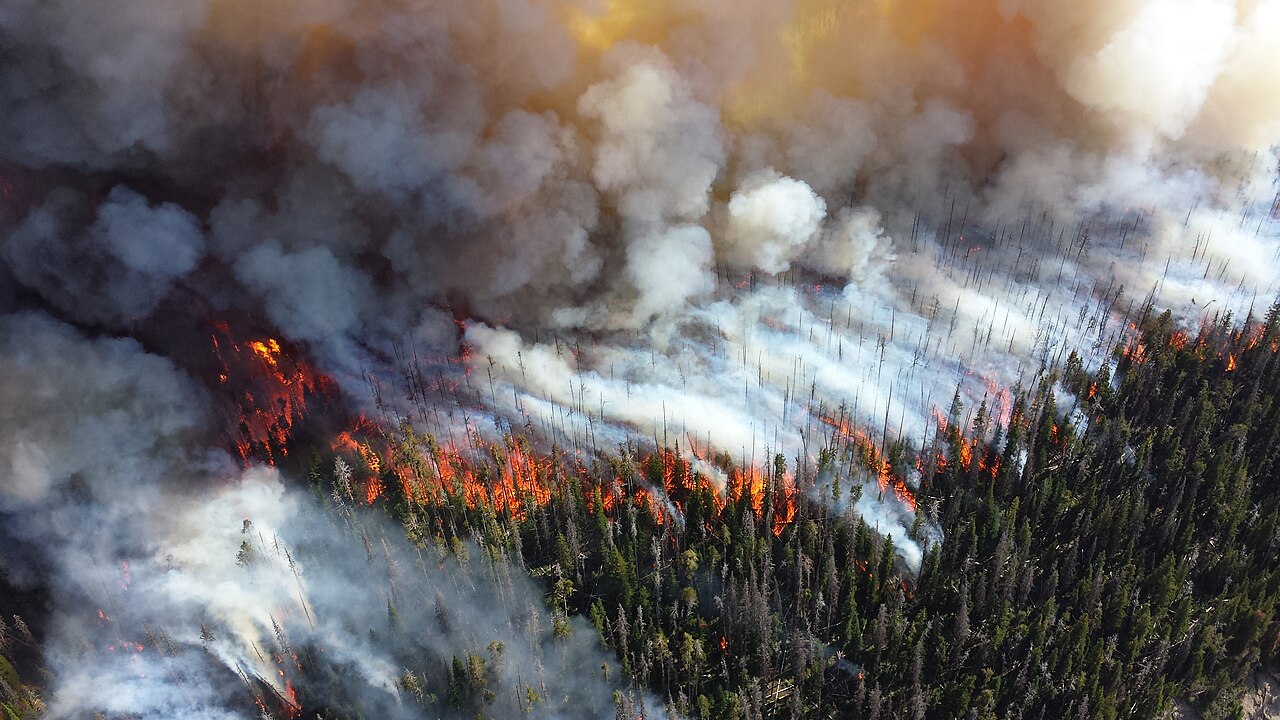When bushfires were raging across the Queensland landscape before summer had even arrived, specialist pilot Mark Lewis was among those flying into the thick smoke.
The First Officer of the Canadian Conair Large Air Tanker (LAT) knew his 10,000-litre loads of water would make a difference to the crews battling below.
“When we get down low over the fire, it’s often a very bumpy, tumultuous ride,” Mr Lewis said.
“We do like to participate and help out and give back.”
Mr Lewis is one of three Canadian pilots who have been stationed in Bundaberg, 400 kilometres north of Brisbane, with the LAT for the Queensland bushfire season.
From there, the aerial asset can reach Proserpine in the north, the Queensland/New South Wales border to the south, or Tambo in the west within one hour.
A partnership between the Queensland and Victorian governments means the LAT is stationed in Queensland from September to December, before heading south until February as part of a $15 million, four-year contract through to the end of 2024.
“I think the secret is out within our company, and I think there’ll be more people interested in coming here after they’ve experienced it,” Mr Lewis said.
A busy fire season
Queensland’s Rural Fire Brigade Association recently described 2023 as the worst fire season in 70 years.
In the last week of October, Queensland firefighters battled more than 400 fires.
Despite never leaving the ground in 2022, the LAT crew answered the call repeatedly in 2023, performing 85 drops of a total 670,000 litres of water, or fire retardant.
The Bombardier Dash-8 Q400AT logged 57.8 hours of flight time in just over three months.
“Last year, we had no activity for the LAT, which is a good thing of course for the people of Queensland,” Mr Lewis said.
“Having a little bit more active season … keeps our skills a little sharper, so that when we are called out, hopefully we’re more effective in our role then because of that.”
Filling up in 10 minutes
The team is always at the ready, attending daily briefings and preparing to launch.
When a request comes in, it takes just 10 minutes to fill the plane’s large external tank.
Depending on the location and intensity of the fire, the LAT will make multiple passes each day.
The aircraft is manned by two of the three pilots on a rotational basis, but the small crew does not work alone.
Along with support on the ground, a “bird dog” aircraft paves the way.
“That aircraft is a lead plane for us. It sorts out what we’re doing, what our strategy is going to be and relays that to us,” Mr Lewis said.
“It sorts out what some of the low-level dangers might be over the fire area.
“They are a lot smaller, more manoeuvrable, so they go down low and have a look and see where we’re going to go and make sure things are not in the way, determine which way we’re going to drop and demonstrate that to us.”
From commercial plane to water bomber
There is something familiar about stepping inside the LAT, despite it being little more than an empty shell.
“This aircraft is a Dash-8 400 series, which is still used as a commercial aircraft, which is kind of rare for water bombers,” Mr Lewis said.
“This aircraft was chosen for its configuration and fuel efficiency and carrying ability.”
The LAT has been modified significantly, most notably the removal of the interior and the addition of the external tank.
“There’s a computer system to regulate the outflow of retardant from that tank. There’s some modifications in the cockpit to monitor the systems in the aircraft, the angle of attack, the G-loading in and around fire,” Mr Lewis said.
“We want to monitor the fatigue level that the aircraft is undergoing because of course the aircraft hasn’t been specifically designed for this type of work.”
Exploring Australia
For Mr Lewis, flying the LAT is as much about lifestyle as it is about helping others.
He began his career flying small aircraft and cargo, before moving on to medivac and small corporate jets, which he described as fun, but “lacking a few things”.
“The opportunity came to join Conair [aerial firefighting] for me in 2015 and, in addition to feeling productive and doing something useful, the scheduling and working the summers and having the winters mostly off is the lifestyle attraction,” Mr Lewis said.
With three pilots covering the roster, they developed their own rotation to make the most of their time down under.
“It allows each of us individually to have enough time off to go and kick around and check out different things that Queensland has to offer, down to Brisbane or up north,” Mr Lewis said.
“We’re all kite surfers, so we certainly enjoy getting out to the beach and having a nice time in the water.”
LINK TO SOURCE: https://www.msn.com/en-au/news/australia/canadian-conair-large-air-tanker-performs-85-drops-across-queensland-in-busy-bushfire-season/ar-AA1mdCaj

